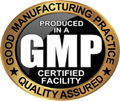What's In It?
The major components of colostrum include the following substances:
Immunoglobulins - Globulin proteins that function as antibodies, immunoglobulins are the most plentiful immune factors found in colostrum. Immunoglobulin G (IgG) counteracts bacteria and toxins in the blood and lymphatic system; immunoglobulin M (IgM) seeks out and attaches itself to viruses in the circulatory system; immunoglobulins D and E (IgD and IgE) remove foreign substances from the bloodstream and activate allergic reactions.
Growth Factors - Includes insulin-like growth factors (IgF-1 and IgF-2), transforming growth factors (TgF-A and TgF-B), an epithelial growth factor (EgF), and a platelet-derived growth factor (PDGF). Growth factors stimulate normal growth as well as the healing and repair of aged or injured skin, muscle, and other tissues. In addition, growth factors help the body to burn fat instead of muscle for fuel when a person is fasting.
Glycoproteins (Protease inhibitors) - Complex proteins that protect immune factors and growth factors from being broken down by the acids in the digestive tract. Lactoferrin - A protein that transports iron to red blood cells and serves to deprive viruses and harmful bacteria of iron.
Proline-Rich Polypeptide (PRP) - An immune modulating hormone that regulates the thymus gland, helping to calm a hyperactive immune system or stimulate an underactive immune system. Growth Hormone - Stimulates metabolism and slows some of the signs of aging.
Leukocytes - Leukocytes are white blood cells that stimulate production of inflammatory cytokines such as interferon, a protein that inhibits viruses from reproducing.
Enzymes - Colostrum is rich in enzymes that help clean up debris and control inflammation.
Cytokines and Lymphokines - These are substances that regulate the body's immune response, stimulate the production of immunoglobulins, and affect cell growth and repair.
Sulfur - A mineral that is an important building block of proteins, sulfur is a component of metabolic compounds that have natural antibiotic properties.
Clinical Uses of Colostrum
The antiviral, antifungal, and antibacterial properties of colostrum enable it to kill numerous types of pathogens. Therefore, colostrum is widely used in natural medicine to treat a variety of diseases and disorders.
A number of recent clinical studies have shown that colostrum is effective in reversing the inflammation of the digestive tract in HIV/AIDS patients caused by opportunistic infections. Colostrum is effective in preventing intestinal infections by keeping the bacteria from attaching themselves to the intestinal wall, and also by killing the bacteria themselves.
A large proportion of the immunoglobulins in colostrum are not absorbed by the body but remain in the digestive tract where they attack organisms that cause disease. Colostrum has proved to be capable of killing Campylobacter, Helicobacter pylori, Listeria, Salmonella, Shigellosis, and five types of streptococci.
Allergies and Autoimmune Diseases - The PRP in colostrum has been demonstrated to reduce or eliminate the pain, swelling, and inflammation associated with allergies and autoimmune diseases (multiple sclerosis, rheumatoid arthritis, lupus, myasthenia gravis). These effects are related to PRP's ability to inhibit the overproduction of lymphocytes (white blood cells) and T-cells.
Possible Side effects With the exception of allergic reactions in persons who are known to be allergic to cow's milk, colostrum does not produce any major side effects at any level of consumption. Mild flu-like symptoms that disappear with continued use of colostrum have been reported in children. 







 Email This Page
Email This Page


